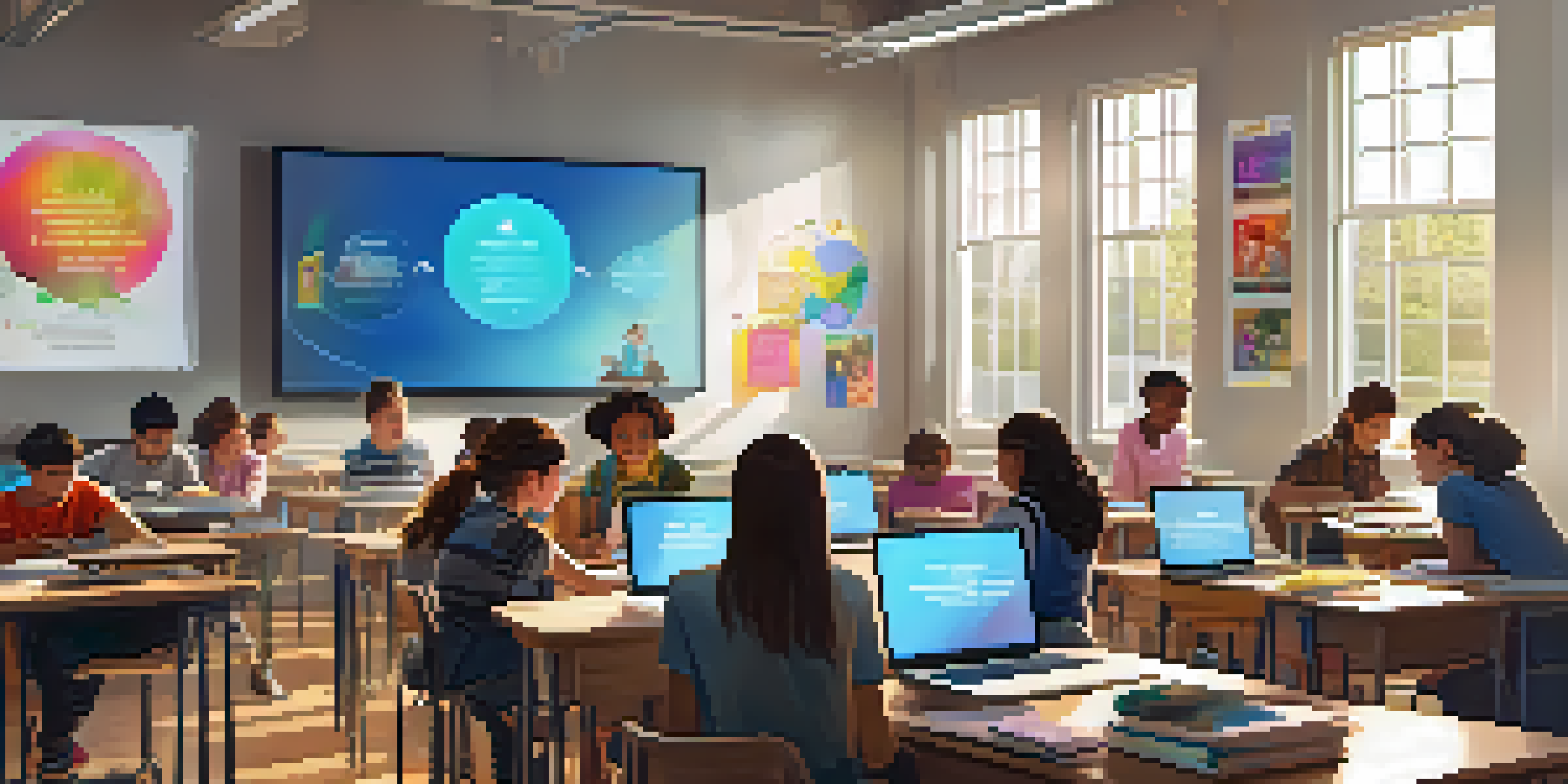The Science of Motivation in Digital Learning Environments

What Drives Motivation in Digital Learning?
Motivation is the spark that ignites learning, especially in digital environments. It can be influenced by various factors, including personal interests, goals, and the learning context. In online settings, understanding what drives this motivation is crucial for educators and learners alike. By recognizing these elements, we can create engaging and effective learning experiences.
The greatest sign of success for a teacher is to be able to say, 'The children are now working as if I did not exist.'
For instance, learners who set specific goals tend to show higher motivation. This could be something like completing a course or mastering a new skill. When students have a clear objective, they are more likely to stay focused and committed to their learning journey. This goal-setting not only enhances motivation but also fosters a sense of accomplishment.
Additionally, intrinsic motivation plays a significant role in digital learning. This type of motivation comes from within—think of the joy of learning something new simply for the sake of knowledge. When learners are intrinsically motivated, they are often more engaged and willing to tackle challenges, leading to a richer educational experience.
The Role of Autonomy in Learning Motivation
Autonomy refers to the ability of learners to take charge of their own education. In digital learning environments, providing choices can significantly enhance motivation. When students have the freedom to select topics, projects, or learning paths, they are more likely to feel invested in their learning. This sense of ownership can lead to greater engagement and satisfaction.

For example, an online course that allows students to choose between different modules or formats can cater to varied interests and learning styles. This flexibility not only empowers learners but also encourages them to explore subjects that genuinely captivate them. As a result, motivation thrives in environments that prioritize learner autonomy.
Motivation Fuels Digital Learning
Understanding what drives motivation, such as personal goals and intrinsic interest, is essential for creating engaging digital learning experiences.
Moreover, fostering autonomy doesn't mean abandoning guidance. In fact, effective online courses often strike a balance between providing structure and allowing freedom. By offering support and resources while still encouraging independent exploration, educators can create a motivating atmosphere that inspires learners to take initiative.
Feedback: A Key Component of Digital Motivation
Feedback is another critical factor that influences motivation in digital learning. Timely and constructive feedback helps learners understand their progress and areas for improvement. In online settings, where face-to-face interactions might be limited, effective feedback becomes even more vital. It can guide learners, boost their confidence, and keep them motivated to continue.
Motivation is what gets you started. Habit is what keeps you going.
Consider a scenario where a student submits an assignment and receives immediate, personalized feedback. This interaction not only validates their efforts but also provides valuable insights to enhance their understanding. Such feedback loops create a dynamic learning environment that motivates learners to persist and strive for excellence.
Furthermore, feedback should be framed positively, highlighting strengths while also addressing weaknesses. This balanced approach encourages students to view challenges as opportunities for growth rather than obstacles. When learners feel supported and understood, their motivation to engage with the material often flourishes.
The Impact of Social Interaction on Motivation
Social interaction plays a pivotal role in motivating learners, even in digital spaces. Online forums, group projects, and collaborative tools allow students to connect and share ideas. This sense of community fosters motivation, as learners can support each other, celebrate achievements, and tackle challenges together. The social aspect of learning can make the experience more enjoyable and engaging.
For example, consider a virtual study group where students discuss course material and exchange resources. This collaboration not only enhances understanding but also creates a sense of belonging. When learners feel they are part of a supportive community, their motivation to participate and excel often increases.
Autonomy Enhances Learner Engagement
Providing learners with choices and a sense of ownership in their education significantly boosts their motivation and satisfaction.
Moreover, incorporating elements like peer reviews or discussion boards can further enrich the social learning experience. Such interactions cultivate a collaborative spirit, motivating learners to engage actively and contribute to their peers’ success. In essence, the social dimension of digital learning can significantly uplift motivation.
Gamification: Making Learning Fun and Motivating
Gamification is a powerful strategy that can enhance motivation in digital learning. By incorporating game-like elements—such as points, badges, and leaderboards—educators can make learning more appealing. This approach transforms traditional learning experiences into engaging challenges that encourage students to push their limits and achieve goals.
For instance, an online platform that rewards learners for completing modules or participating in discussions can create a sense of accomplishment. These incentives not only motivate learners to engage but also foster a healthy competition that can further drive participation. Gamification taps into the innate desire for achievement and recognition, making the learning process more enjoyable.
However, it’s essential to strike a balance. While gamification can enhance motivation, it should complement educational objectives rather than overshadow them. By combining fun with meaningful learning experiences, educators can create a digital environment that motivates and inspires students to reach their full potential.
Understanding the Role of Personalization in Motivation
Personalization is key to boosting motivation in digital learning environments. Tailoring content to meet individual needs and preferences can significantly enhance engagement. By providing learners with materials that resonate with their interests and learning styles, educators can create a more motivating experience. This customized approach helps students feel valued and understood.
For instance, an adaptive learning platform that adjusts difficulty levels based on a learner's progress can foster motivation. When students encounter challenges that are neither too easy nor too difficult, they are more likely to stay engaged and committed. Personalization empowers learners to take ownership of their education, leading to greater motivation and satisfaction.
Feedback and Community Matter
Timely, constructive feedback and social interaction foster a supportive learning environment, motivating students to actively engage and excel.
Additionally, personalizing feedback and communication can further strengthen motivation. When educators acknowledge individual progress and achievements, it reinforces a learner's sense of accomplishment. This recognition can be a powerful motivator, encouraging students to continue their learning journey with enthusiasm.
Creating a Positive Learning Environment for Motivation
A positive learning environment is essential for fostering motivation in digital settings. This includes not only the content but also the overall atmosphere of the course. Factors such as supportive communication, encouragement, and a sense of safety can significantly influence a learner's motivation. When students feel comfortable and supported, they are more likely to engage actively in their learning.
For example, instructors who actively encourage questions and discussions create a welcoming atmosphere that nurtures curiosity. This openness can lead to increased motivation as learners feel their contributions are valued. A positive environment promotes collaboration and exploration, allowing students to thrive.

Moreover, incorporating elements of fun and creativity can also enhance the learning atmosphere. Activities that spark joy and excitement can make learning feel less like a chore and more like an adventure. Ultimately, a positive learning environment cultivates motivation, inspiring learners to embrace their educational journey wholeheartedly.